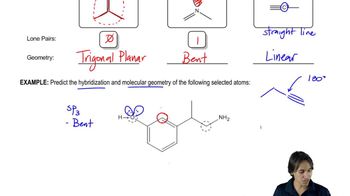Draw a Lewis structure, and classify each of the following compounds. The possible classifications are as follows:
alcohol
ether
ketone
aldehyde
carboxylic acid
alkene
(h)
(i)
 Verified step by step guidance
Verified step by step guidance Verified video answer for a similar problem:
Verified video answer for a similar problem:



 1:49m
1:49mMaster Why we need functional groups. with a bite sized video explanation from Johnny
Start learning